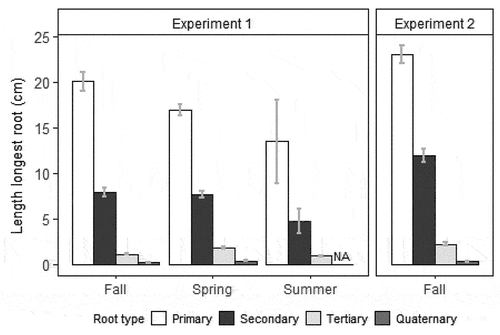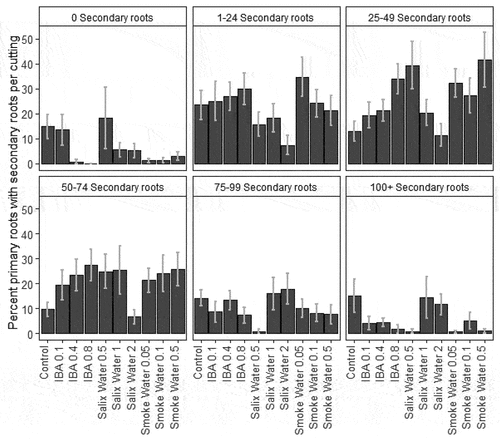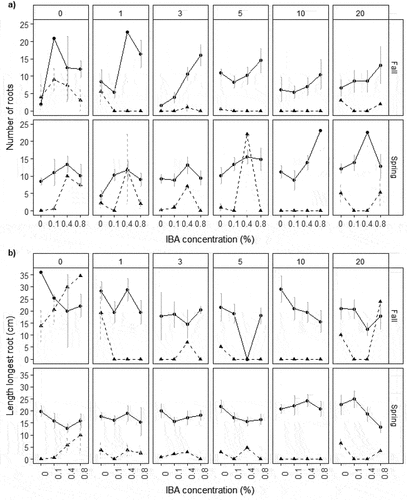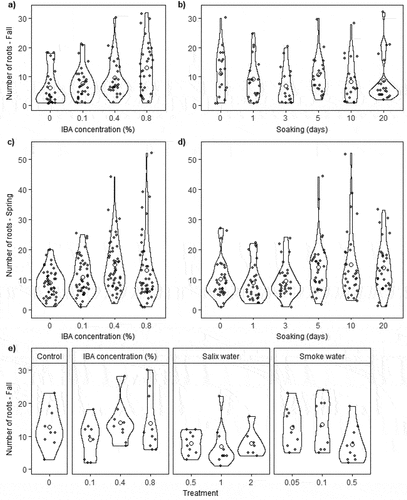Figures & data
Table 1. Experiment 1 model rankings and probabilities for fall and spring cuttings predicting proportion of cuttings that rooted and for cuttings with at least one root, predicting number of roots, longest root length, and proportion with shoot health 5
Figure 1. Length of longest primary, secondary, tertiary, and quaternary roots with standard error at day 60 for rooted Salix spp. cuttings in experiments 1 and 2 at different times of year. Length of longest quaternary roots was not assessed for summer cuttings in experiment 1.

Figure 2. Percentage of fall and spring Salix spp. primary roots with secondary roots per cutting in different secondary root categories (vertical panels) in experiment 1 by IBA concentration (%; x axis) and soaking time (days; horizontal panels) with standard error. All cuttings are present in each secondary root category (vertical panel). Each bar is n = 6 (fall) and n = 9 (spring).

Figure 3. Percentage of fall Salix spp. primary roots with secondary roots per cutting in experiment 2 with secondary roots in different secondary root categories by treatment (x axis) with standard error. All cuttings are present in each root category. Each bar is n = 10 (all rooted cuttings are represented in each secondary root box).

Table 2. Mean difference (Diff) in rooting and percentage change between IBA concentration (0.1, 0.4, 0.8 percent) and control (0 percent) and soaking length (one, three, five, ten, and twenty days) and control (zero days) for number of roots and root length (cm) for Salix cuttings in fall and spring in experiment 1
Figure 4. Number of roots (a) and length longest root (b) with standard error at day 60 for all Salix spp. cuttings in experiment 1 that had callus (solid line) and did not callus (dashed line) by IBA concentration (%; x axis), season (horizontal panels), and soaking time (days; vertical panels).

Figure 5. Violin and jitter plots for number of roots in fall (a), (b), (e) and spring (c), (d) on rooted Salix spp. cuttings from experiment 1 for IBA concentration (%) (a), (c); soaking time (days) (b), (d); and from experiment 2 by treatment (e). Closed circles represent individual roots; open circles represent treatment means. Each closed circle in the jitter plot had a small value (between 0 and 0.2) added to the value on the x axis to visually separate points. Black lines for each violin plot use density curves to show data distribution, with wider areas having higher frequency of data points than narrower areas.

